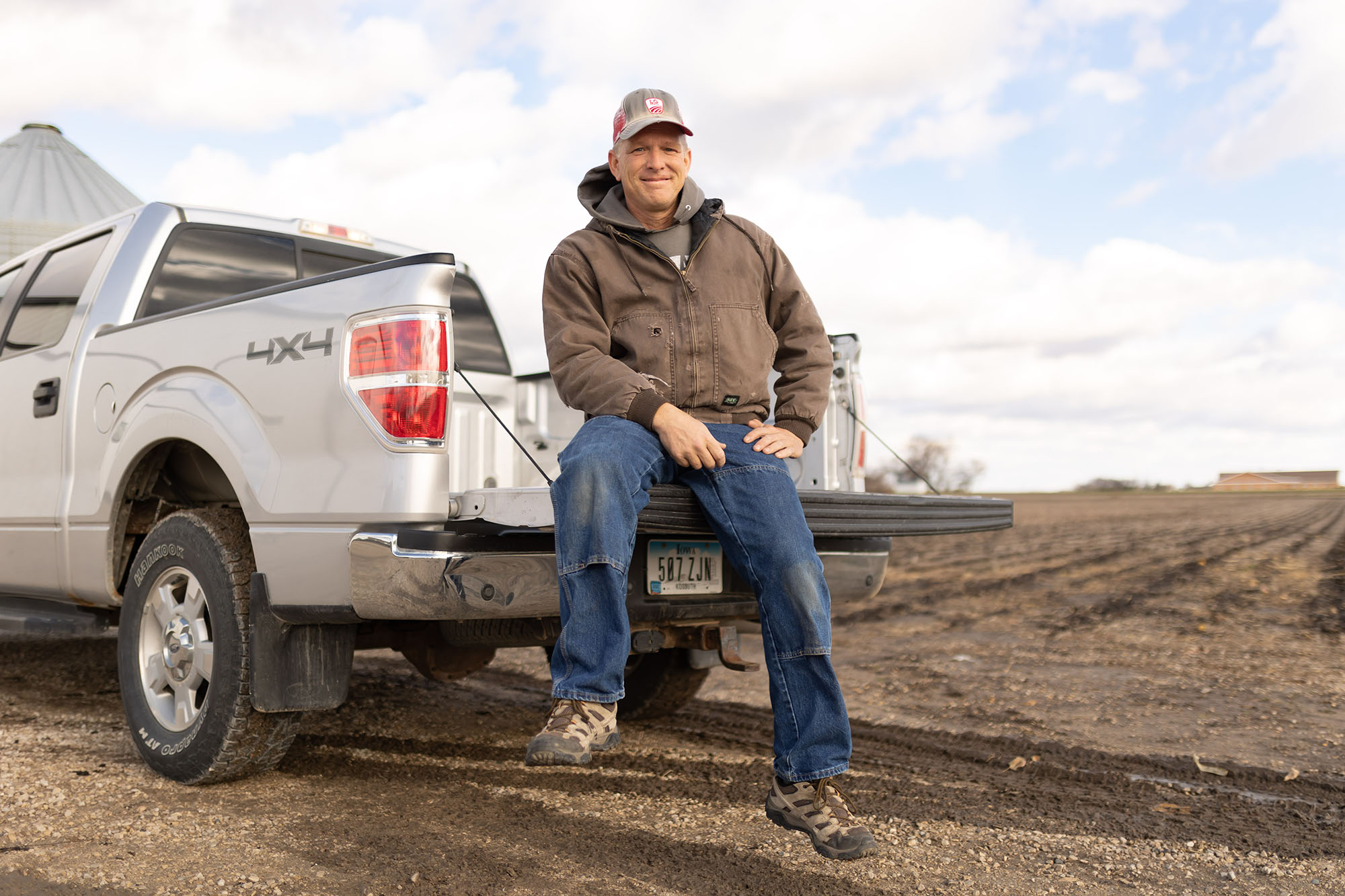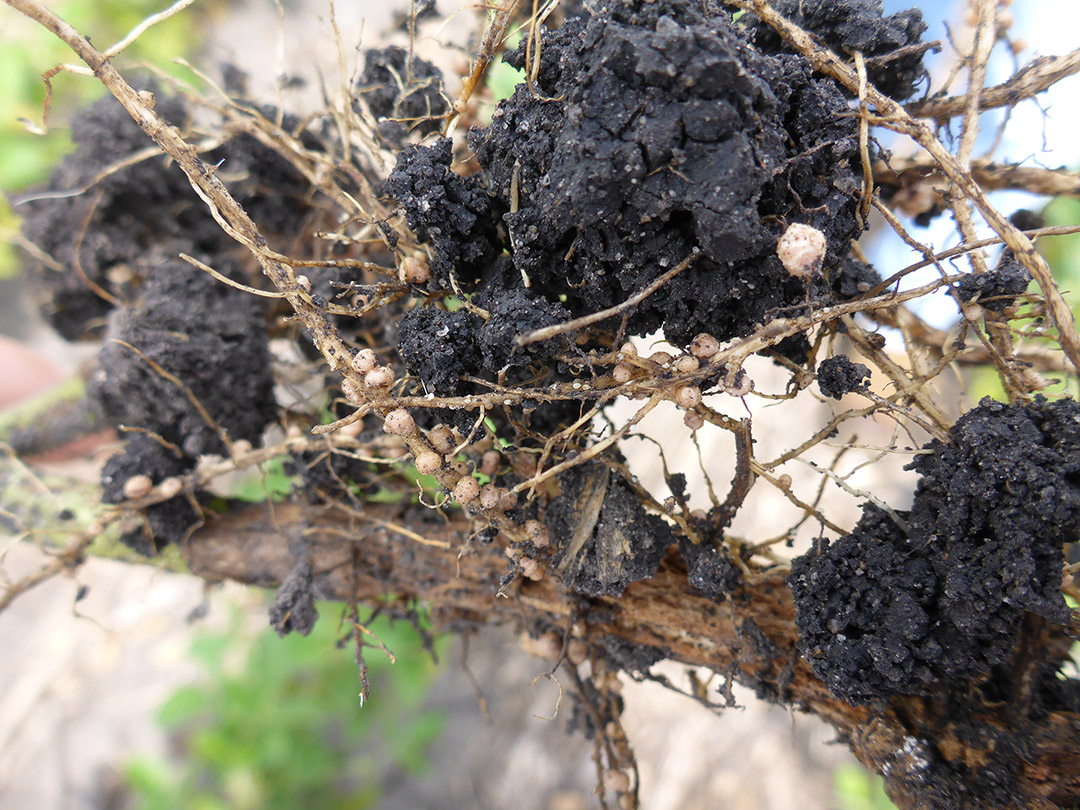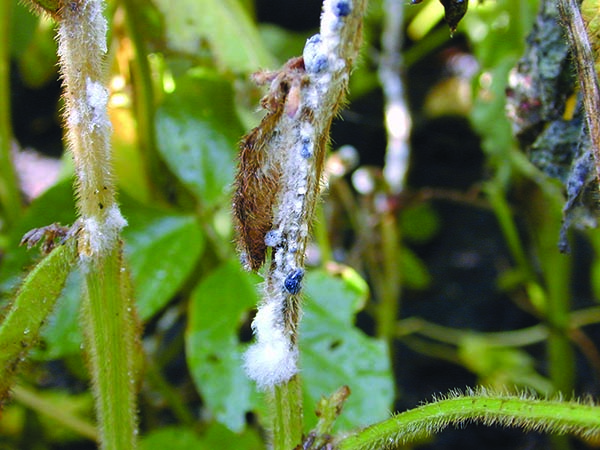
Todd Thilges, farmer from West Bend (Photo: Iowa Soybean Association)
Seed selection tips
December 14, 2021 | Kriss Nelson
Weed, insects, diseases and weather — whatever the battle may be, the best line of defense begins with seed selection.
“This is probably the most important decision you are going to make to achieve good yields next year,” says Scott Nelson, senior field services program manager for the Iowa Soybean Association (ISA).
Here are six considerations when making soybean seed selections for 2022.
1. Climate variability
Combat the unpredictability of the weather, Nelson suggests planting a broad base of soybean varieties.
“Having several varieties in your operation is important to buffer yourself against extreme weather that may come,” he says.
2. Consider costs
If input costs continue to rise and commodity prices drop, some producers might look to a less expensive seed. But is that a wise decision?
“Sometimes the most expensive seed a farmer buys are at the cheapest cost,” Nelson says. “Sometimes, the best seed deals aren’t the best for your farm.”
Nelson advises understanding the farm’s production history, doing an economic analysis and finding a trusted advisor.
“Farmers should have a few seed advisors or agronomists they trust and companies they want to do work with and depend on to help pick their products,” he says. “A good seed advisor is golden — but you don’t want to talk to just one.”
This is especially critical in soybean seed variety selection.
“It is important to go through that exercise of placing products and understanding where this soybean fits on the farm versus just going to the local co-op and buying whatever is popular,” Nelson says.
3. The fight against Soybean Cyst Nematode
If you know your farm has a history of heavy Soybean Cyst Nematode (SCN) pressure or you have recently done fall soil sampling to find an SCN presence, find a soybean seed with the Peking resistance trait.
“SCN is developing tolerance to the most common cyst resistance trait that has been on the market and that is PI88788,” Nelson says. “Peking is another type of resistance to SCN that affects its reproduction.”
However, the issue with Peking is that it may not be available in a wide selection of varieties.
“We don’t want to see producers put all their eggs in one basket with a few varieties,” Nelson says. “Do some soil testing, find out if those acres are infested with SCN and find a Peking resistant variety.”

4. White mold
White mold, a disease that thrives in wet soil conditions, was an unexpected problem in Iowa’s soybean fields in 2021.
“Place varieties with a greater tolerance to white mold on fields with a history of the disease,” Nelson says. “Some may be more tolerant than others — again, this is where a cheap seed can cost you.”

5. Seed treatments
Inquire about a seed treatment package. They've become a popular way to help control Sudden Death Syndrome (SDS).
“This is a devastating disease, especially in poorly drained soils,” says Nelson.
There is often an insecticide portion to a seed treatment some producers may want to consider helping control early season insects like bean leaf beetles.
“All seed treatments are not equal, so understand the value of the treatment,” he says.
The necessity of a seed treatment varies on many circumstances, including timing of planting and seed populations.
“If you are planting later, you may not need seed treatments,” says Nelson. “If you are considering dropping to a lower seed population, then you may need a seed treatment to help protect the lower stands.”
6. Be selective when adopting new herbicide traits
Consider the entire trait package of seed from resistance to pests, yield potential and the herbicide trait you prefer.
“The newer herbicide traits may not have been bred yet for multi-pest resistance and stress tolerance,” says Nelson.
Todd Thilges, an ISA farmer-member from West Bend, said those rapid changes in herbicide traits has been a challenge when it comes to seed selection.
“I feel like I am starting with new varieties every year — I don’t like doing so. It has been a struggle the last couple of years,” he says.
At the top of his wish list is high-yielding traits with weed control and disease tolerance.
“I first look at the herbicide trait package. We try to keep all our acres to a similar trait package to reduce chances of a herbicide application disaster,” says Thilges, adding the soil types and history of each field are also taken into consideration.
Not only does Thilges depend heavily on his agronomist and seed companies for information, he conducts his is own research and seeks guidance from ISA trial results.
“I look at trials from ISA. In the past, I have been part of trials myself,” he says.
Back